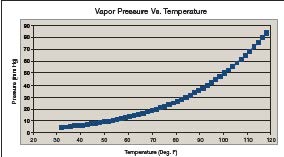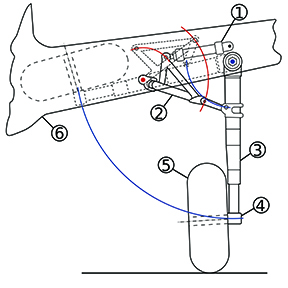My previous remarks about density versus humidity were not about quantitative calculations of density. I merely presented a simple way of understanding why it is that on a humid day, other factors being equal, we need to anticipate a modest decrease in aircraft performance.

288
It may be important, however, to provide enough calculation to illuminate the approximate magnitude of this effect. Toward that end, I worked the following example comparing the extremes of zero and 100 percent relative humidity at a pressure and temperature of 14.696 psia (standard barometer) and 70 degrees F, respectively. For the zero percent relative humidity case, a straightforward ideal gas law calculation yields a dry air density of 0.0749 lb/ft3. For the 100 percent relative humidity case, we need to consult a thermodynamics “steam table,” from which we learn the partial pressure due to water vapor is 0.3632 psia. The partial pressure due to dry air then becomes (14.696 – 0.3632) = 14.3328 psia. Using these partial pressure values in a mole fraction calculation, we find that on a mole basis, this mixture is 97.53 percent dry air and 2.47 percent water vapor. Using these mole fractions in a two-component ideal gas law calculation yields a moist air density of 0.0742 lb/ft3. This amounts to a decrease in density of just under one percent due to the presence of the moisture. To put that in perspective, this is about the same decrease that would result from a five-degree F increase in temperature.
If any readers wish to pursue this subject in more detail, they are welcome to contact me. Be forewarned, however, I am a retired engineering professor. There is danger that I may lapse back into my professor mode. Might feel the urge to give a quiz!
Don Moen
Via e-mail
Thanks, Don. We think the point here is that humid air adversely impacts our density altitude computations by reducing engine and airfoil performance. If we’re counting on a density altitude calculation uncorrected for humidity, we shouldn’t be surprised the airplane isn’t performing as the book says.
GPS Altitude?
I really enjoyed the articles on understanding undercarriages and minimum airspeed (September 2012). It occurs to me that a reminder about GPS-derived altitude might be worth mentioning.
Some GPS units use input from an altitude encoder and, if the correct altimeter setting is used, they will reflect the same altitude as your altimeter (within 100 feet, given that many encoders only use 100-foot increments). Some GPS units are reflecting only a GPS-derived altitude which can be several hundred feet different from msl altitudes. This could be a trap for the unwary.

288
Some of the “backup” instruments display altitude that looks very much like a primary instrument it’s really GPS altitude. Just a thought. Keep up the good work.
Frank Middleton
Via e-mail
Thanks for the memory-jogger. We’ve often observed the difference between altitude values derived from GPS and barometric equipment. It’s often much greater than any horizontal GPS position error and results from the difficult geometry involved in fixing the receiver’s altitude.
IS Our Pilots Learning?
Robert Wright often writes about risk management. Then, in November’s Learning Experiences, we hear about a 200-hour VFR pilot travelling over a sparsely lit Texas countryside above a broken cloud deck to a remote, unfamiliar airport, apparently depending on his GPS for navigation, then descending through a hole in the clouds to his destination. No wonder there is a problem in aviation safety.
Morton Doran
Fairmont, B.C.
You broke the code!




